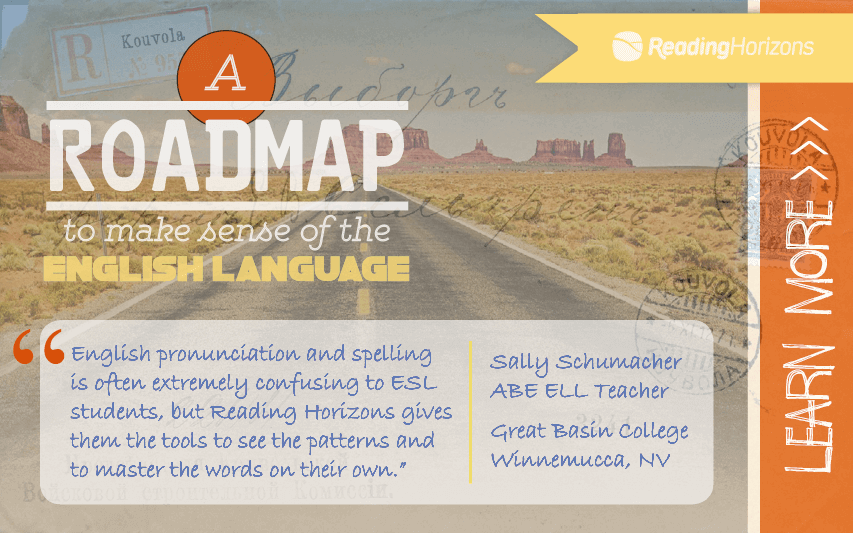This blog’s original content is based on a post from Heidi Hyte and was recently updated by Reading Horizons Education Consultant Dr. Ethan Lynn.
Even those of us in the teaching profession may need clarification on the hundreds of acronyms that have surfaced to describe our jobs. When I first started teaching English to speakers of other languages, I heard it called “ESL.” Since then, experts have introduced additional acronyms (e.g., EFL, ESOL, and ELL) to get at the same thing. Still, the acronyms provide more distinction between the different learning environments.
Here’s a comprehensive overview of the different terms, uses, and nuances:
ESL: English as a Second Language is learning English in a country where English is the official or dominant language. For example, students from non-native English-speaking countries who come to the U.S. and Canada for an extended time learn English as a Second Language. They acquire English to communicate in the dominant language spoken in their community.
EFL: English as a Foreign Language is learning English in a non-English-speaking country. For example, we would consider students in China learning English as EFL because English is not the country’s official language. However, if those same students were in the U.S. learning English, they would be considered ESL students.
ESOL: ESOL refers to teaching English to Speakers of Other Languages. It applies to both ESL and EFL contexts. The distinction is important because some individuals argue that when students learn English in a native English-speaking country (ESL), they are not necessarily learning a second language. It could be a student’s third or even fourth language. Then, English as a Second Language is limiting and not fully comprehensive in its description.
ELL: K-12 environments commonly refer to English Language Learners (ELLs). However, some school districts prefer to use the term ESOL to describe their student population. This is simply a preference.
ESP: English for Special Purposes includes students learning English in the context of a particular field, profession, or topic. For example, when I taught legal English in China, I taught English in the context of law. These students were learning English to study law through an American university where the professors were all native English speakers. EOP, English for Occupational Purposes, is similar.
MLL: Multilingual Learners refers to students who are learning English in addition to their native language(s). This term is increasingly used in educational settings to highlight the strengths and assets of students who come from diverse linguistic backgrounds. By recognizing these students as multilingual, educators can better support their language development while valuing their existing language skills.
Build stronger vocabulary foundations for multilingual learners with practical, research-based strategies. Download our free guide to make vocabulary instruction more effective, inclusive, and impactful. Get the eBook below!
EB: Emergent Bilingual is a term used to describe students who are in the process of becoming proficient in both their native language and English. This approach emphasizes bilingualism as an asset and supports maintaining the student’s first language while they learn English.
ENL: English as a New Language is a term often used in educational settings, especially in K-12 environments, to describe students who are learning English in addition to their home language. This terminology emphasizes that English is being added to the student’s existing linguistic repertoire.
EAL: English as an Additional Language is used in contexts where English is one of several languages the learners speak. This term acknowledges that English may not be the second language for these students; they may have proficiency in multiple languages.
SLIFE: Students with Limited or Interrupted Formal Education refers to learners who have experienced significant educational gaps, often due to circumstances such as migration or conflict. These students may need additional support in both language acquisition and adjusting to formal education settings.
EAP: English for Academic Purposes focuses on teaching English to students who need the language for academic study, particularly in higher education settings. EAP courses are designed to equip students with the language skills necessary to succeed in academic environments such as universities.
We recommend TESOL’s list of Common Acronyms in the English Language Teaching Profession for quick reference.

